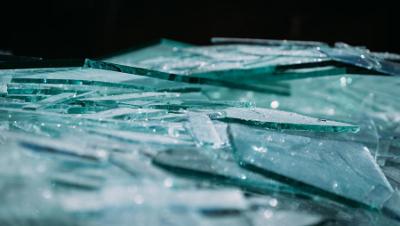More cullet, less CO₂
In France, the Aniche flat glass plant has launched a "Tri Calcin" [Cullet Sorting] project. The aim is to significantly reduce its CO2 emissions and recycle the glass available from local renovation sites.

Flat glass plants have always recycled cullet from internal production waste. Compared to the use of conventional raw materials such as sand, carbonate or limestone, manufacturing glass from cullet reduces direct CO2 emissions by 60%.
The Aniche flat glass plant in France has set itself the target of reducing its carbon emissions by more than 6,000 metric tons per year, and having more than 50% cullet in furnace infeed. To achieve this, it is necessary to add cullet from the plant's customers' offcuts to the internal production offcuts, and even end-of-life cullet, such as old windows from renovation or demolition sites.
The cullet sorting project involves investing in a cullet sorting and control line to remove impurities that otherwise make it unsuitable for flat glass production. The robustness of the industrial process will thus be strengthened, and the incoming flows and the quantity of cullet used increased to the maximum amounts possible.
France's Recovery Plan is financing 30% of the initial budget, so the plant should come on stream in 2022. This initiative could be replicated at Saint-Gobain Glass sites around the world, to significantly reduce the carbon footprint.

